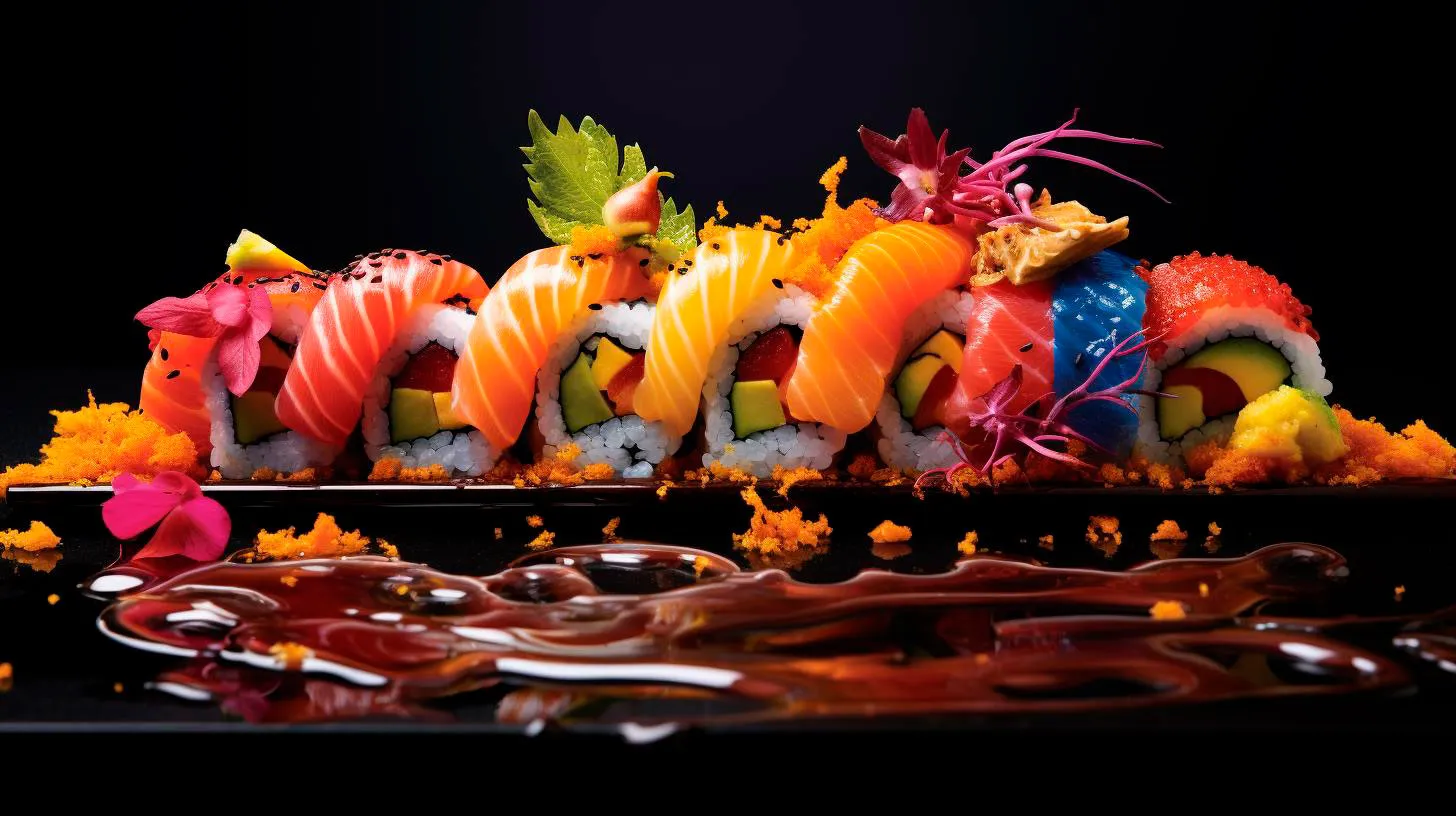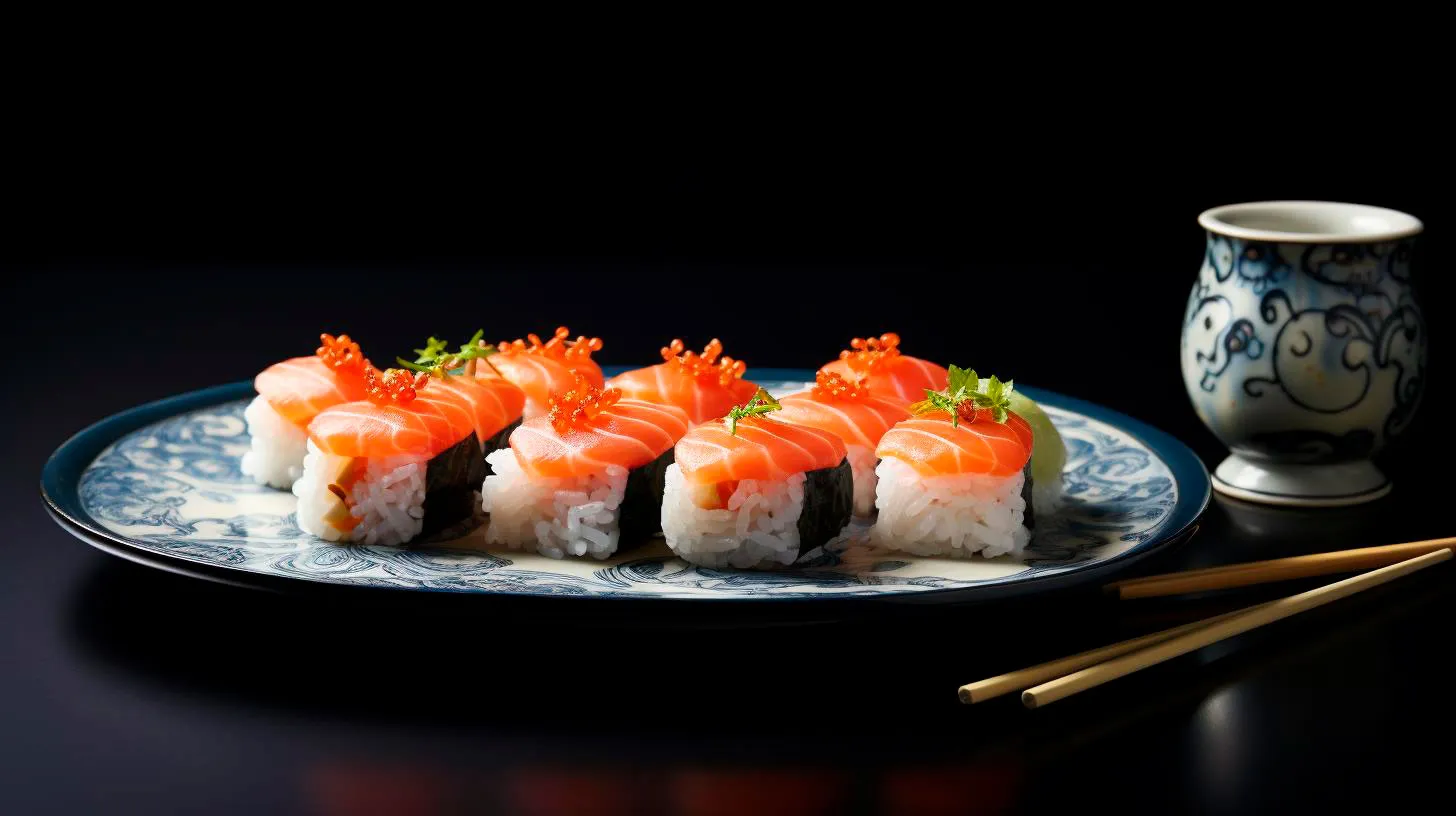From Ocean to Plate: Ensuring the Quality of Sushi-Grade Fish
In this article, we will explore the journey from the ocean to your plate, ensuring the highest standards are met at every step.
The Demand for Sushi-Grade Fish
The global sushi market is projected to reach a value of $23.75 billion by 2025, growing at a CAGR of 3.6%. This increasing demand emphasizes the need for a robust supply chain that ensures the availability of safe and premium-quality fish for sushi enthusiasts worldwide.
Understanding what defines sushi-grade fish is crucial. It refers to the fish that meets specific quality standards, enabling it to be served raw. The key attributes to consider are freshness, texture, flavor, and appearance. Achieving these qualities requires a meticulous, well-regulated process.
Sourcing Sushi-Grade Fish
One of the most critical steps in ensuring the quality of sushi-grade fish is the sourcing process. Fish should come from sustainable, well-managed fisheries that adhere to strict regulations. Additionally, suppliers must follow proper handling practices to guarantee fish quality and safety.
Here are some key features to look for when sourcing sushi-grade fish:
- Wild-caught fish: Sushi-grade fish is usually sourced through wild-caught methods, ensuring a natural and authentic taste.
- Fish species: Certain fish species, such as tuna, salmon, and yellowtail, are popular choices for sushi due to their taste and texture.
- Freshness indicators: Look for fish with bright, clear eyes, bright red gills, and shiny skin. These signs indicate the fish’s freshness and overall quality.
- Sustainable certifications: Opt for suppliers who have sustainable certifications, such as the Marine Stewardship Council (MSC) or the Aquaculture Stewardship Council (ASC). These certifications guarantee that the fish is sourced responsibly.
Transportation and Storage
Once sourced, maintaining the quality of sushi-grade fish during transportation and storage is paramount. Proper temperature control and handling are essential to prevent spoilage and maintain freshness.
Key takeaways for transportation and storage:
- Cold chain management: Temperature-controlled transportation is crucial to ensure the fish remains fresh and safe. This includes refrigerated trucks and containers.
- Hygienic packaging: The fish should be packed in leak-proof, food-grade packaging to avoid contamination and maintain its quality.
- Storage conditions: Proper storage facilities should maintain a temperature below 40°F (4°C) to prevent bacterial growth and extend the fish’s shelf life.
The Role of Quality Control
Quality control plays a vital role in ensuring the safety and quality of sushi-grade fish. Rigorous inspection protocols are necessary to identify any potential risks and maintain high standards.
Quality control measures include:
- Microbiological analysis: Regular testing for harmful bacteria such as Salmonella, Listeria, and E.coli minimizes the risk of foodborne illnesses.
- Traceability systems: Implementing tracking systems helps identify the origin of the fish, ensuring its legality and authenticity.
- Supplier audits: Conducting audits to assess suppliers’ practices and certifications guarantees they meet the required standards.
Ensuring Customer Satisfaction
Nowadays, customers are more conscious about the quality of the food they consume. By ensuring the quality of sushi-grade fish, businesses can enhance customer satisfaction and build a loyal clientele.
Key advantages of ensuring sushi-grade fish quality:
- Enhanced flavors: Fresh, high-quality fish guarantees exceptional flavors, allowing customers to experience the true essence of sushi.
- Health and safety: Adhering to strict quality standards significantly reduces health risks associated with consuming raw fish.
- Brand reputation: Establishing a reputation for serving top-notch sushi-grade fish can attract new customers and create repeat business.
In Conclusion
From sourcing to quality control, every step in the journey of sushi-grade fish must uphold the highest standards. By selecting sustainable sources and continuously monitoring the fish’s quality, businesses can ensure customers enjoy a memorable sushi experience. So, the next time you savor a piece of mouthwatering sushi, remember the meticulous process behind it that ensures its impeccable taste and quality.
Fresh and Sustainable Seafood: A Guide to Sourcing Sushi-Grade Fish
In this guide, we will explore the key factors to consider when sourcing sushi-grade fish and provide you with valuable tips to make informed choices. So, let’s dive in!
What Makes Fish Sushi-Grade?
Not all fish is suitable for sushi. Sushi-grade fish refers to fish that meets specific criteria to ensure its safety and quality. The key components of sushi-grade fish include:
- Freshness: The fish should be handled properly and processed promptly to maintain its freshness and taste.
- Species: Certain fish species are traditionally preferred for sushi due to their taste, texture, and lack of strong flavors.
- Quality: The fish should have a desirable fat content and firm flesh to ensure a delightful sushi experience.
- Safety: Sushi-grade fish must undergo proper freezing techniques to eliminate any potential parasites or bacteria.
Now that we know what sushi-grade fish entails, let’s embark on the journey of sourcing the freshest and sustainable seafood for your sushi cravings.
1. Choose Trusted and Reputable Suppliers
When it comes to sourcing sushi-grade fish, it is crucial to establish a relationship with trusted and reputable suppliers. Look for suppliers who prioritize quality and sustainability. Choose suppliers who:
- Have a track record of providing high-quality seafood to sushi restaurants and reputable establishments.
- Source their fish from sustainable fisheries or farms that follow responsible fishing practices.
- Provide detailed information about the fish’s origin, catch method, and whether it has been properly frozen.
By selecting reputable suppliers, you can ensure that you are getting the best sushi-grade fish that meets the necessary standards.
2. Know Your Fish Species
Understanding the different fish species suitable for sushi is essential. Some popular sushi-grade fish options include:
- Salmon: Known for its rich flavor and buttery texture, salmon is a favored choice for sushi.
- Tuna: Tuna comes in various types, such as Bluefin, Yellowfin, and Albacore, each offering a unique taste experience.
- Yellowtail: Yellowtail, also known as Hamachi, has a delicate flavor and a velvety texture that sushi enthusiasts love.
- Snapper: With its mild flavor and firm flesh, snapper is a versatile fish often used in sushi.
Being knowledgeable about different fish species helps you make informed decisions when choosing your sushi-grade fish.
3. Take Sustainability into Account
As responsible consumers, it is important to prioritize sustainability when sourcing seafood, including sushi-grade fish. Overfishing and destructive fishing practices can harm marine ecosystems. Look for sustainable seafood options by considering the following:
- Check for sustainable seafood certifications, such as the Marine Stewardship Council (MSC) or Aquaculture Stewardship Council (ASC) labels.
- Choose fish species that are not overexploited and are abundant in the wild.
- Opt for farmed fish that follow environmentally friendly practices, such as closed containment systems and low-impact feed.
By choosing sustainable sushi-grade fish, you can enjoy your sushi guilt-free, knowing you are supporting the health of our oceans.
Key Takeaways
Sourcing sushi-grade fish involves considering factors like freshness, species, quality, and safety. To recap, here are the key takeaways:
- Choose trusted suppliers who prioritize quality and sustainability.
- Become familiar with different sushi-grade fish species and their characteristics.
- Prioritize sustainability by selecting fish from well-managed fisheries or responsible aquaculture operations.
Remember, a memorable sushi experience starts with sourcing the finest sushi-grade fish. By following these guidelines, you can enjoy delicious sushi while supporting sustainable practices in the seafood industry. Happy sushi making!
Trusted Suppliers: Where to Buy High-Quality Sushi-Grade Fish
Why is Sourcing High-Quality Fish Important?
When it comes to sushi, the quality and freshness of fish are paramount. Using low-quality or improperly handled fish can lead to a subpar sushi experience, affecting the taste, texture, and overall enjoyment. Opting for high-quality sushi-grade fish ensures that you are using the best ingredients and elevating your sushi to new heights.
Key Takeaway: Quality fish is the foundation of exceptional sushi.
Top Suppliers for Sushi-Grade Fish
1. **Fish for Sushi**: With a reputation for offering exceptional fish, Fish for Sushi is a top choice among sushi lovers. They source their fish from renowned suppliers and provide a wide variety of sushi-grade fish, including tuna, salmon, and yellowtail. Their fish is hand-selected and impeccably handled, ensuring the highest level of freshness and quality.
- Wide range of sushi-grade fish available
- Impeccable handling and freshness
- Convenient online ordering
- Reliable shipping options
2. **Catalina Offshore Products**: With over forty years of experience, Catalina Offshore Products is a trusted supplier for sushi-grade fish. They work closely with fishermen and often supply top-tier sushi restaurants. Their fish undergoes meticulous quality control procedures, and they offer a diverse selection of high-quality seafood.
- Long-standing reputation in the industry
- Direct relationships with fishermen
- Rigorous quality control measures
- Wide range of premium seafood
3. **Honolulu Fish Company**: As the name suggests, Honolulu Fish Company is located in Hawaii, known for its abundance of fresh fish. They offer an extensive range of sushi-grade fish, sourcing directly from the Pacific waters surrounding Hawaii. Their commitment to sustainability and superb quality make them a go-to supplier for sushi enthusiasts.
- Direct sourcing from Hawaiian waters
- Emphasis on sustainability
- Diverse selection of sushi-grade fish
- Strict quality standards
Ensuring Quality and Freshness
When purchasing sushi-grade fish, it’s essential to consider a few factors to ensure you’re getting the finest quality.
- Look for suppliers that prioritize freshness and sustainability.
- Check for clear indications of sushi-grade fish, such as “sashimi-grade” or “safe to eat raw.”
- Consider the supplier’s reputation and read customer reviews to gauge the overall satisfaction.
- Assess the supplier’s handling and shipping practices to guarantee freshness upon delivery.
Final Thoughts
Sourcing high-quality sushi-grade fish plays a crucial role in crafting exceptional sushi. By choosing trusted suppliers like Fish for Sushi, Catalina Offshore Products, and Honolulu Fish Company, you can ensure the freshest and finest ingredients for your sushi creations. Remember to prioritize freshness, sustainability, and reputation when selecting your supplier. Elevate your sushi experience and impress your friends and family with sushi creations that are truly extraordinary!
Secrets of the Fish Market: How to Identify and Buy Sushi-Grade Fish
The Importance of Sushi-Grade Fish
Before we dive into the details, let’s first clarify what sushi-grade fish actually means. Sushi-grade fish refers to the quality of fish that is safe to consume raw (sashimi) or lightly cooked. Sourcing sushi-grade fish ensures that you are getting the freshest and highest quality fish available, with optimal taste and texture – key elements that contribute to a perfect sushi experience.
When it comes to sushi-grade fish, freshness is paramount. It is crucial to understand the factors that determine the freshness and quality of fish to make informed choices when purchasing.
Identifying Quality Fish at the Market
Here are some key tips to help you identify and buy sushi-grade fish:
- Trustworthy Seafood Suppliers: Look for reputable fish markets or seafood suppliers with a track record of delivering high-quality fish to restaurants and consumers. Seek local markets that specialize in fresh seafood, as they are more likely to provide a variety of sushi-grade fish.
- Appearance: Examine the fish’s appearance. Fresh fish should have clear, bright eyes, vibrant skin, shiny scales, and a moist texture. Avoid fish with dull eyes, pale skin, discolored patches, or strong fishy odors.
- Timing: Visit the market early in the morning when the fish is likely to be the freshest. Many fish markets receive daily deliveries, ensuring you have a better selection of sushi-grade fish.
- Firmness and Texture: High-quality sushi-grade fish should be firm to the touch and have a smooth texture. Press your finger gently against the flesh – it should bounce back and not leave an indentation.
- Sourcing: Inquire about the sourcing practices of your fish market. Opt for fish that have been sustainably caught or farmed, as this ensures the fish’s quality and supports responsible fishing practices.
Key Takeaways
By considering the following key takeaways, you will be well-equipped to identify and purchase sushi-grade fish:
- Choose trustworthy seafood suppliers known for delivering high-quality fish.
- Check for clear, bright eyes, vibrant skin, shiny scales, and a moist texture.
- Visit the market early in the morning to get the freshest fish.
- Ensure the fish is firm to the touch with a smooth texture.
- Opt for fish that have been sustainably caught or farmed.
Now that you are equipped with the knowledge to recognize sushi-grade fish, you can confidently indulge in your homemade sushi creations or enjoy a sushi meal at your favorite restaurant. Remember, the quality of fish significantly impacts the taste and overall experience, so choose wisely to savor each bite!



